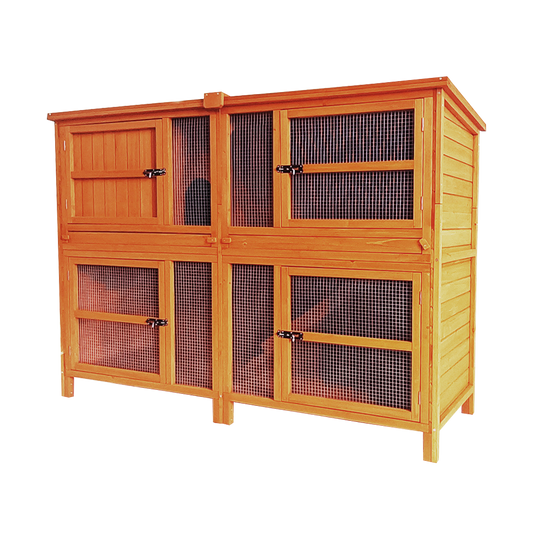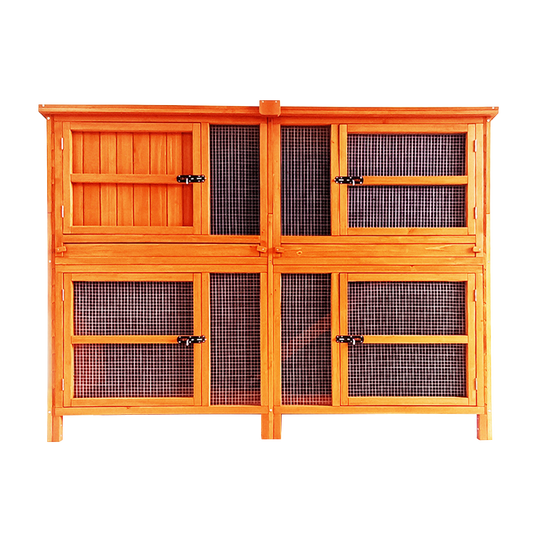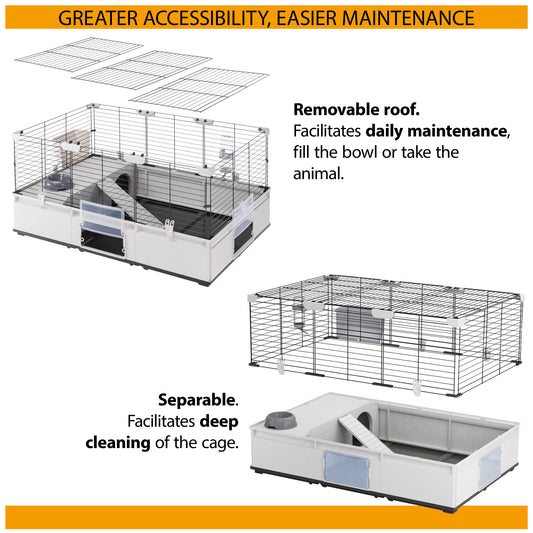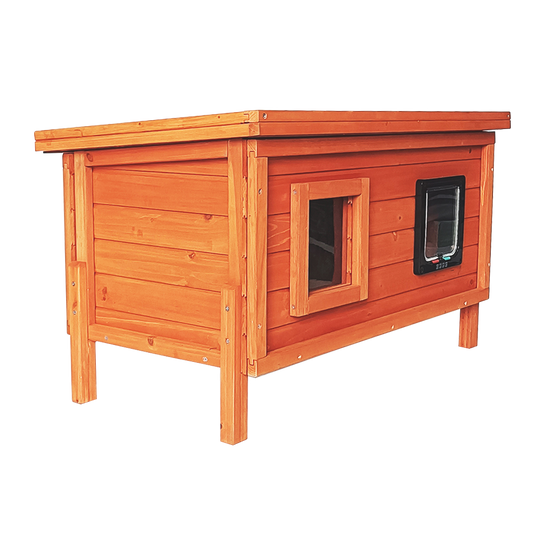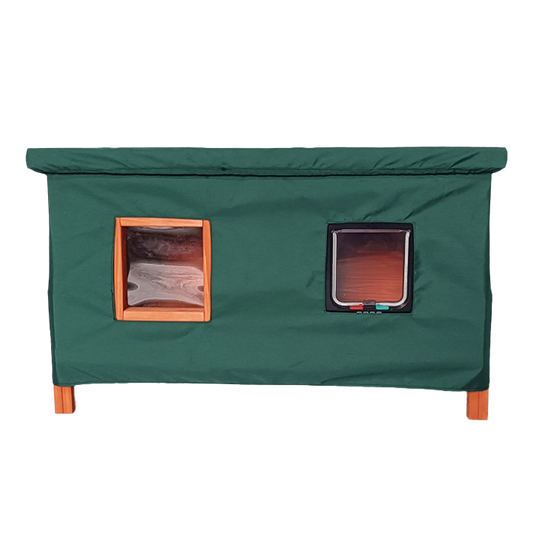It's RAWgust! This month is all about delving into the essential facts of pet nutrition, specifically focusing on raw diets. We'll help you discover what's optimal for your dog and whether the raw feeding approach is truly the best option. We not only explore the raw diet, but also consider viable alternatives like dry dog food, cold pressed dog food, and freeze-dried dog food. These alternatives boast high levels of nutrients and vitamins, which might be more suitable for your furry companion.
So, whether you're a new pet parent or changing to an older dog's diet, our handy guide can help.
Dry Dog Food
Dry dog foods are quite a popular choice among dog owners. Dry kibble is easy to store and has a lengthy shelf life. It offers convenience and great value for money for cat and dog owners alike.
Dry dog food is made through a process called extrusion; grinding and mixing the ingredients and then passing them through a steam cooker. The mixed ingredients are shaped into biscuits and dried with hot air. It's a quick, consistent, and cost-effective production method.
Although convenient, extrusion processed dry dog foods can have some drawbacks. The high-temperature processing can, in some cases, result in the loss of natural nutrients present in the raw ingredients. To compensate, many dog food manufacturers add vitamins and minerals back in to the product.
In addition to traditional extruded dry foods, there are other types such as baked dog food and cold-pressed. Baked dog foods involve a slower baking process where biscuits pass through a long oven on a conveyor belt. This process allows for lower pressures and may retain more natural nutrients. However, it often requires the inclusion of wheat gluten as a binding agent, to which many dogs can be allergic.
Wet Dog Food
Wet dog foods, as the name suggests, have a higher water content compared to dry dog foods. Packaged in tins, trays, or pouches, ingredients are cooked before being vacuum-sealed and heat sterilized.
The cooking and sterilization processes can vary in temperature and duration, but typically involve temperatures in excess of 100 degrees Celsius. Some raw feeding advocates argue that such high temperatures may damage some of the natural nutrients. However, the vacuum sealing and sterilization ensure a long shelf life without the need for added artificial additives.
The higher moisture content in wet foods can often be beneficial for cats and dogs that don't drink much. Providing extra hydration, they can help maintain urinary tract health. However, the high water content creates additional volume and you may need to feed your pet a larger quantity of food. This can make wet food a relatively expensive option compared to dry kibble.
The naturally softer texture of wet foods can also benefit older cats and dogs who more frequently experience dental problems. However once a can, tray or pouch is opened, the food can spoil quickly and will therefore need to be chilled. Keeping uneaten cat and dog food chilled can be a challenge for busy families with a full fridge.
Raw Dog Food
Raw dog food includes unprocessed natural ingredients such as meat, organs, bones, fruits, and vegetables, closely mimicking the diet of dog's wild ancestors.
Many dog owners have witnessed significant improvements in their dog's overall health and well-being through raw feeding. However, it's important to consider potential risks associated with fresh food diets, including the presence of harmful bacteria like Salmonella and Listeria.
Complete & Complementary Dog Food
Before diving into the raw and alternative dog food options, it's essential to understand the basics of complete and complementary dog foods. The first consideration is whether the dog food is complete or complementary.
Complete dog foods are formulated to provide all the necessary nutrients for your dog's overall health and well-being. From dry kibble to wet pouches, it comes in a wide variety of formats. As a convenient and often lower priced option, it's the go-to choice for dog owners worldwide.
A key advantage with complete dog foods is that they take out the guesswork. Designed to meet all their nutritional needs, complete foods provide a balanced diet for your cat or dog. Easier still, most complete cat and dog foods are formulated to cater for the nutritional requirements unique to each life stage, from the high energy needs of a puppy or kitten to the more sedentary requirements of older cats and senior dogs.
However, complete dog foods are not without their critics. Some natural feeding advocates question the use of synthetic additives and the level of processing required for products like dry kibble. They argue that these foods might not provide the same level of nutritional value as fresh, whole foods. Also, that giving a dog the same complete food for extended periods might limit dietary variety and have a negative effect.
In contrast, complementary dog foods do not provide all the essential nutrients a pet needs. You must combine them with other foods to form a balanced diet.
The benefit of complementary foods is that they can offer more flexibility and variety in your cat or dog's meals. They allow you to mix and match different ingredients and can add extra texture, nutrients or dietary fibre. Treats and health supplements also fall under this category.
Home-prepared cat and dog food is another option for pet owners who want total control over their pet's diet. However, it requires extensive research, time, and expertise to ensure proper nutrition and avoid nutrient imbalances or deficiencies. It is highly recommended to consult with a vet or animal nutritionist if you choose this route.
Cold-Pressed Dog Food: The Best of Raw and Dry Foods Combined
For those looking for an alternative to a raw diet, cold-pressed dog foods are one of the newest, most popular options. Cold-pressed dog foods offer the advantages of conventional dry food processing but avoid the potential loss of nutrients from processing with high temperatures.
Cold-pressed dog foods involve drying and grinding the ingredients before pressing them into a biscuit shape. This method preserves nutrients to a greater extent while still providing the convenience of dry dog food.
Walker & Drake is one of the leading brands offering cold-pressed complete dog foods. With their delicious recipes, your furry friend can enjoy a satisfying meal packed with essential nutrients.
Air-Dried Dog Food
Air-dried dogfoods take it a step further by using fresh ingredients rather than ground or pre-cooked ones. The food is exposed to a current of heated air, gently removing the water through evaporation. This method is thought to preserve more nutrients and is often used for cat and dog treats.
Freeze-Dried Dog Food
Another option in the dry dog food category is freeze-dried dog food and dog treats. Freeze-drying involves first freezing the ingredients and then gently heating them within a vacuum to remove any moisture. This results in minimal nutrient damage whilst also offering a long shelf life without the need for preservatives.
Freeze-dried dog food and dog treats offer a delicious and nutritious dining experience for your dog. The process ensures that the dog food retains its original flavours and nutritional value, making it a fantastic choice for dogs with discerning tastes.
Choosing The Right Dog Food
Choosing between wet, dry, raw, cold-pressed and freeze-dried dog food options depends on your dog's unique needs and preferences. At Get Set Pet, we offer only cat and dog food brands that provide optimal nutrition, ensuring your pet receives the best care possible.
So, this RAWgust, embark on an exciting culinary journey for your pet and explore the various raw and alternative food options available. Whether you choose cold-pressed dog food, freeze-dried dog food, or stick to traditional complete dog foods, your dog will surely appreciate the delightful flavours and nutritional goodness.
Still undecided? Contact our customer services team who will be delighted to help find the right wet or dry food for your pet. Just email hello@getsetpet.com
This blog post has been adapted from previous content by David Jackson at AllAboutPetFood.
If you enjoyed reading this article, why not have a look at:




